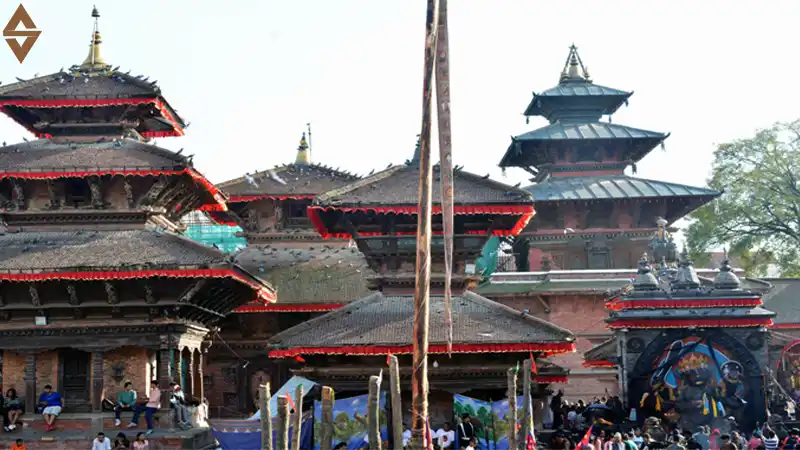
The origin of the Nepali Pagoda Style Temple is not exactly declared yet. However, the pagoda style is very old and common here. Changu Narayan Temple of Bhaktapur is one of the oldest pagoda temples and it dates back to the 3rd century. At one point, the best architect of Nepal, Araniko, was sent to China to create and spread the pagoda style. It then spread to the rest of the countries of the East and gained worldwide fame. Although pagodas were considered to be brought into the country a number of centuries before, they grew and changed the most under the Malla dynasty. There aren’t many pagodas that date back before the Malla era.
The plan of the building dictates the shape of a pagoda roof. The most common ones are the square pagodas, although people occasionally use rectangular, octagonal, and circular pagodas. Builders support pagodas with overhanging roofs, from the inside with the inner walls, and on the outside with wooden struts on wooden pillars or brick walls.
The main features of Nepali pagoda temple architecture are:
- Plinth
- Protectors at the main entrance (Lions, Deities or Makara )
- Stairway leading towards the entrance door
- Beautifully designed wooden pillars
- Timber supports
- wooden struts adorned with carvings of gods and goddesses
- Slop tile roofs
- Gajur (Tip of the Temple)
The very best example of the Nepali pagoda-temple sculpture is the Nyatapola Temple of Bhaktapur, a dedication of Goddess Laxmi. The 17th-century pagoda of five stories represents the best of workmanship done by terracotta brickwork, woodcarvings, tile work, and surki mortar. Symbolically, the pagoda represents the five sacred elements of the world: the earth, the water, the fire, the air, and the sky. Bhaktapur, the medieval city of the Kathmandu Valley, preserves the rich heritage and artistic grandeur of Nepal.
A number of other famous pagoda temples include:
- Nyatapola Temple of Bhaktapur: the tallest 5-storeyed pagoda in Nepal.
- Kasthamandap (Kathmandu): a legendary temple said to be made from a single tree.
- Taleju Bhawani Temple (Kathmandu Durbar Square): an important and famous royal temple.
Shikhar Style of Architecture in Nepal Besides pagoda-style temples, another stunning temple style that was influenced by the evolution of Nepal was the Shikhar style. Shikhars (Sanskrit for “mountaintop”) temples are quite easily distinguishable by the tall tower-like shape that rises vertically upwards resembling a mountain. Having the stacked roofs of the pagoda temples as their disadvantage, shikhars have a smooth curvilinear or pyramidic profile. Carvings of brick or stone mostly decorate the walls, which stand on a dais.. Two of the finer examples of Shikhar style buildings are the Krishna Mandir of the Patan Durbar Square and the Mahabouddha Temple. The Shikhar style shows the artistic presence of Nepal from southern territory traditions of temples while being characteristically native.
Come along and experience cultural heritage tours and ancient structures of the Kathmandu Valley in Nepal! with Shangri-La Voyages
Namaste!







